Address
304 North Cardinal
St. Dorchester Center, MA 02124
Work Hours
Monday to Friday: 7AM - 7PM
Weekend: 10AM - 5PM
Address
304 North Cardinal
St. Dorchester Center, MA 02124
Work Hours
Monday to Friday: 7AM - 7PM
Weekend: 10AM - 5PM
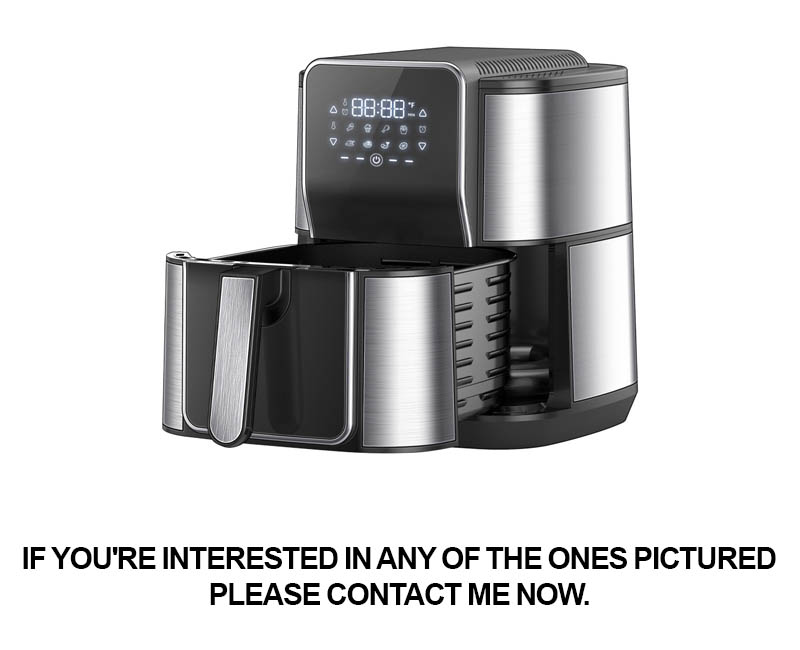
In a world where culinary trends are constantly evolving, the rise of air fryers in commercial kitchens has been nothing short of revolutionary. These modern appliances have not only transformed the way we cook but also sparked a wave of innovation in the kitchen equipment industry. Among the forefront of this innovation is the NSFcertified Commercial Air Fryer Plant, a game-changer that’s redefining efficiency and health in commercial cooking. This article delves into the innovative features of this air fryer, the growing market trends and consumer demand, the health benefits and efficiency gains it offers, real-life success stories, its comparison with traditional cooking methods, the environmental impact, and finally, the future prospects and innovations that are shaping the landscape of commercial cooking.
In recent years, the culinary landscape has seen a remarkable transformation, with commercial air fryers emerging as a game-changer in the kitchen industry. These innovative appliances have gained significant traction due to their ability to offer healthier, faster, and more efficient cooking solutions. The rise of commercial air fryers can be attributed to several key factors that have revolutionized the way we think about food preparation.
Firstly, the health-conscious consumer trend has played a pivotal role in propelling the popularity of air fryers. With the increasing awareness of the health risks associated with deep-frying, chefs and restaurant owners are seeking alternatives that allow them to prepare delicious dishes with minimal oil. Air fryers use hot air to circulate around the food, resulting in crispy outsides and tender insides without the need for excessive oil.
Secondly, the convenience factor cannot be overlooked. In a fast-paced world where time is of the essence, commercial air fryers offer a quick and easy way to cook a variety of foods. Whether it’s fries, chicken, or vegetables, these appliances can cook a batch in a fraction of the time it would take with traditional cooking methods. This efficiency is particularly appealing to busy kitchens looking to streamline their operations.
Moreover, the versatility of commercial air fryers is undeniable. They can handle a wide range of recipes, from appetizers to desserts, making them a valuable addition to any kitchen. Chefs are now able to experiment with new dishes and cooking techniques that were previously limited by traditional frying methods.
The technology behind commercial air fryers has also evolved significantly. Modern models come equipped with features such as adjustable temperature controls, timer settings, and even preset programs for different types of food. This level of precision allows for consistent results and ensures that every dish is cooked to perfection.
In addition to the benefits for health and convenience, commercial air fryers also offer economic advantages. By reducing the amount of oil used, these appliances can lead to significant cost savings over time. For businesses operating on tight budgets, this is a compelling reason to switch to air frying technology.
Another factor contributing to the rise of commercial air fryers is the environmental impact of traditional cooking methods. Deep-frying requires large amounts of oil, which can be harmful to the environment when not disposed of properly. Air fryers, on the other hand, are more eco-friendly and contribute to a greener kitchen.
The demand for these appliances has led to a surge in innovation, with manufacturers constantly pushing the boundaries of what air fryers can do. From countertop models to integrated units designed for commercial use, the variety of options available has expanded, catering to the diverse needs of different kitchens.
In the world of commercial kitchens, the competition for efficiency and quality is fierce. Restaurant owners and chefs are always on the lookout for the next big thing that can give them an edge. The rise of commercial air fryers is not just a trend; it’s a testament to the power of innovation and the relentless pursuit of better ways to cook.
As the culinary world continues to evolve, it’s clear that commercial air fryers are here to stay. Their ability to provide healthier, more efficient, and versatile cooking solutions has won them a place in the hearts of chefs and consumers alike. Whether it’s a fast-food joint looking to offer a healthier option or a fine dining establishment aiming to enhance its menu, the commercial air fryer has become an indispensable tool in the modern kitchen.

NSF certification is more than just a stamp of approval; it’s a benchmark of quality and safety that has become synonymous with trust in the kitchen industry. This rigorous process ensures that products meet specific health and safety standards, making them ideal for commercial use.
The National Sanitation Foundation (NSF) is an independent, not-for-profit organization that sets standards for public health and safety. Their certifications are recognized globally and are often required by regulatory bodies and customers alike. When it comes to commercial air fryers, NSF certification is particularly significant.
The certification process for commercial air fryers involves a comprehensive evaluation of the product’s design, materials, manufacturing process, and performance. NSF inspectors look for factors that could impact food safety, such as the potential for bacterial growth, chemical leaching, and electrical safety.
One of the key aspects of NSF certification is the evaluation of the air fryer’s heat distribution. This is crucial because uneven heating can lead to undercooked or overcooked food, which can be a health hazard. The certification ensures that the air fryer maintains consistent temperatures throughout the cooking cycle, providing a safe and reliable cooking experience.
Another important consideration is the material used in the air fryer’s construction. NSF certification requires that the materials used are safe for contact with food and do not leach harmful chemicals into the food. This is especially important for air fryers, as they cook food at high temperatures and often for extended periods.
Electrical safety is another critical factor. NSF certified air fryers must meet strict electrical standards to prevent accidents and ensure that the appliance operates safely. This includes testing for proper grounding, electrical leakage, and resistance to electrical shock.
In addition to the physical aspects of the air fryer, NSF certification also evaluates the manufacturer’s quality control processes. This ensures that each unit produced meets the same high standards, providing consistency and reliability to customers.
The certification process also involves a thorough review of the manufacturer’s documentation, including the product’s specifications, maintenance instructions, and safety data sheets. This ensures that the manufacturer has a comprehensive understanding of the product’s potential risks and has taken appropriate measures to mitigate them.
One of the benefits of choosing an NSF certified commercial air fryer is the peace of mind it offers. Operators can be confident that the appliance has been independently tested and verified to meet the highest standards of safety and performance. This can be particularly reassuring in the wake of foodborne illness outbreaks, where the use of certified equipment can help prevent such incidents.
Moreover, NSF certification can also be a competitive advantage for manufacturers and retailers. It differentiates their products from those that lack certification, making them more attractive to customers who prioritize quality and safety. For businesses looking to enhance their reputation and customer trust, NSF certification is a valuable asset.
In the realm of sustainability, NSF certified air fryers also contribute to the broader environmental agenda. By ensuring that the appliances are energy-efficient and use safe materials, they help reduce the environmental impact of commercial kitchens. This is increasingly important as more businesses seek to adopt eco-friendly practices.
In conclusion, NSF certification is a mark of excellence that speaks volumes about the quality and safety of commercial air fryers. It’s a testament to the manufacturer’s commitment to upholding the highest standards in the industry, providing peace of mind to both operators and consumers. Whether it’s through rigorous testing of the product itself or the evaluation of the manufacturing process, NSF certification ensures that commercial air fryers are not just reliable, but also a safe and sustainable choice for any kitchen setting.

The NSFcertified Commercial Air Fryer Plant represents a groundbreaking leap in the culinary world, shaking up the traditional cooking landscape with its advanced technology and commitment to safety and quality. This plant has emerged as a beacon for those seeking efficient, health-conscious cooking solutions.
In the heart of this plant, state-of-the-art air fryers are meticulously crafted, each one adhering to the stringent standards set by NSF International. These standards ensure that the air fryers are not only effective in their function but also safe for use in commercial kitchens where health and safety are paramount.
The air fryers produced here are designed with an innovative heating system that circulates hot air around the food, resulting in a crispy outer layer and a juicy interior. This method is not only a healthier alternative to deep frying but also a more energy-efficient one. The plant’s commitment to sustainability is evident in the use of advanced insulation and heat recovery systems that minimize energy consumption.
What sets the NSFcertified Commercial Air Fryer Plant apart is its focus on innovation. The plant employs a team of expert engineers and food scientists who are constantly working on improving the air fryer technology. This dedication to innovation has led to features like adjustable temperature controls and programmable cooking times, allowing chefs to achieve precise results every time.
The plant’s attention to detail is another key factor. Each air fryer is built with high-quality materials that are resistant to corrosion and withstand the rigorous demands of a commercial kitchen. The durable construction not only ensures longevity but also reduces the need for frequent maintenance and repairs.
Safety is the cornerstone of the NSFcertified Commercial Air Fryer Plant. The air fryers undergo rigorous testing to meet the strict NSF/ANSI standards for foodservice equipment. This certification guarantees that the air fryers are free from harmful substances and are safe for food contact, providing peace of mind to chefs and customers alike.
The plant also takes pride in its customization options. Understanding that different kitchens have varying needs, the air fryers can be tailored with specific features and capacities. Whether it’s a countertop model for a small café or a large, industrial-grade unit for a bustling restaurant, the plant offers a wide range of solutions.
Another standout aspect of the NSFcertified Commercial Air Fryer Plant is its commitment to training and support. The plant offers comprehensive training programs for kitchen staff, ensuring they can operate the air fryers to their full potential. This support extends beyond the initial training, with ongoing customer service and technical assistance available.
The impact of the NSFcertified Commercial Air Fryer Plant is already being felt across the industry. Chefs and restaurateurs are embracing this technology for its ability to offer a diverse menu of fried foods with minimal oil, thus appealing to health-conscious consumers. The plant’s air fryers have become a staple in fast-casual chains, upscale restaurants, and even in educational institutions.
In terms of environmental impact, the NSFcertified Commercial Air Fryer Plant’s air fryers are a step towards a greener future. By reducing the amount of oil used in cooking, these fryers help to minimize waste and lower the environmental footprint associated with traditional deep frying methods.
As the plant continues to expand its operations, it is setting new benchmarks in the commercial air fryer market. Its dedication to quality, innovation, and sustainability has positioned it as a leader in the industry, inspiring a wave of change in how fried foods are prepared and enjoyed.
The NSFcertified Commercial Air Fryer Plant is more than just a manufacturer; it’s a revolution in commercial cooking. Its game-changing air fryers are transforming the way kitchens operate, offering healthier options without compromising on taste or quality. With its commitment to excellence and forward-thinking approach, the plant is poised to shape the future of the foodservice industry.
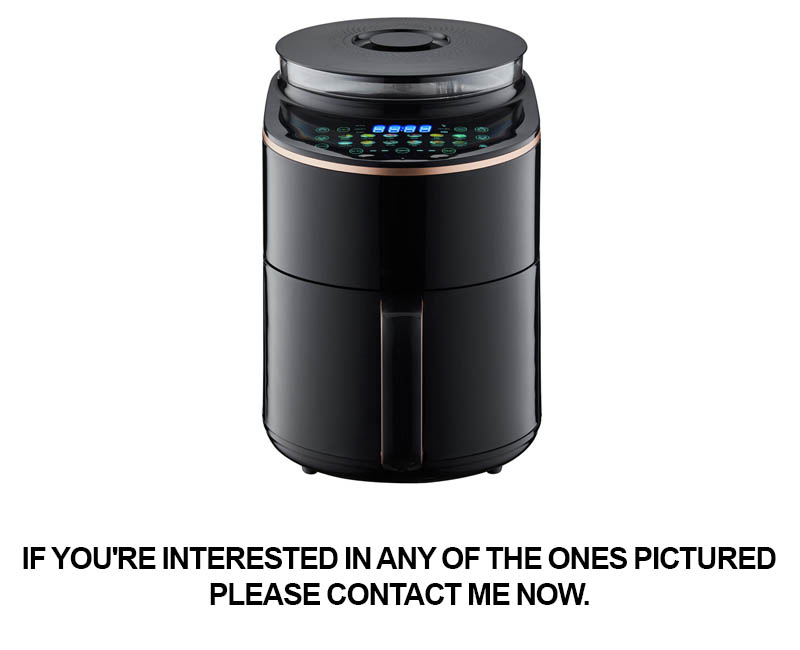
The NSFcertified air fryer stands out not just for its compliance with rigorous safety standards, but also for its groundbreaking features that are reshaping the commercial kitchen landscape. Here’s a closer look at what makes this air fryer truly innovative:
Advanced Heat Distribution: The air fryer boasts a sophisticated heat distribution system that ensures even cooking throughout each batch. This is achieved through multiple heating elements and a rotating fan, which circulates hot air around the food, resulting in perfectly crispy outsides and juicy insides every time.
Energy Efficiency: With the increasing focus on sustainability and cost-effectiveness, this air fryer is a standout for its energy efficiency. It requires less power than traditional fryers, reducing utility bills and making it an environmentally friendly choice for commercial kitchens.
User-Friendly Controls: The air fryer’s interface is designed with the busy kitchen staff in mind. It features intuitive controls that allow for precise temperature and time settings, making it easy to cook a wide variety of foods with minimal guesswork. The digital display provides clear feedback, ensuring that users can monitor and adjust the cooking process effortlessly.
Large Capacity: Designed for high-volume cooking, the NSFcertified air fryer comes with a spacious capacity that can handle large batches. This is particularly beneficial for restaurants and foodservice operations that need to cater to a crowd without sacrificing quality or speed.
Safety Features: Safety is paramount in commercial kitchens, and this air fryer is equipped with multiple safety features. It includes a cool-to-the-touch exterior, ensuring that operators can safely load and unload food without the risk of burns. Additionally, the unit has an automatic shut-off feature that activates if it detects an unsafe temperature or if the door is left open.
Healthier Cooking: One of the most significant innovations of the NSFcertified air fryer is its ability to cook food with minimal oil. This feature is a game-changer for health-conscious consumers and those looking to offer lighter, heart-healthy options on their menus. The reduced oil content not only lowers the calorie count but also helps to maintain the natural flavors and textures of the food.
Customizable Programs: Recognizing that different foods require different cooking techniques, the air fryer offers customizable programs. These presets can be tailored to specific types of food, making it simple to achieve the perfect cook every time, whether you’re frying chicken, cooking French fries, or preparing vegetables.
Quick and Easy Cleanup: Another practical feature is the easy-to-clean design. The non-stick interior and removable parts make cleaning a breeze, saving time and effort for kitchen staff who are always on the go.
Durability: Constructed with commercial-grade materials, this air fryer is built to last. Its sturdy construction can withstand the rigors of a busy kitchen environment, ensuring a long service life and a low total cost of ownership.
Integration with Smart Kitchen Technology: The air fryer is also compatible with smart kitchen technology, allowing for remote monitoring and control via a smartphone app. This integration adds an extra layer of convenience, allowing operators to manage the air fryer even when they’re not on the premises.
Versatility: Unlike traditional fryers that are limited to frying, this air fryer can perform a variety of cooking tasks, including baking, roasting, and dehydrating. This versatility makes it a versatile tool for chefs who want to expand their menu options without investing in multiple appliances.
Customizable Cooking Environment: The air fryer allows for customization of the cooking environment, including the ability to adjust the temperature and airflow. This means that chefs can fine-tune the cooking process to achieve the perfect texture and flavor profile for their specific dishes.
Health and Safety Certifications: Beyond the standard NSF certification, this air fryer comes with additional health and safety certifications, ensuring that it meets or exceeds all relevant industry standards. This provides peace of mind to operators and customers alike.
The innovative features of the NSFcertified air fryer are a testament to the company’s commitment to innovation and excellence. From its energy-efficient design to its user-friendly controls and health benefits, this air fryer is poised to become an essential tool in any commercial kitchen looking to improve its operations and cater to the growing demand for healthier food options.
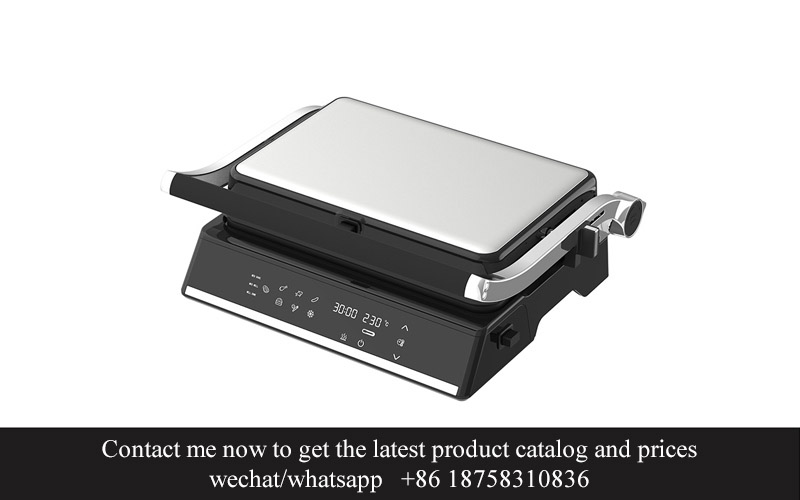
In the ever-evolving world of kitchen appliances, the demand for healthier cooking options has surged. This shift has propelled the market towards innovative solutions, with one standout being air fryers. The rise in popularity of air fryers isn’t just a fad; it’s a testament to the changing landscape of consumer preferences. Let’s delve into the current market trends and the soaring consumer demand for air fryers.
Consumers are increasingly aware of the health risks associated with fried foods, yet the temptation to indulge remains strong. This contradiction has led to a search for healthier alternatives that still satisfy the crave for crispy, delicious snacks. Air fryers have emerged as the perfect compromise, offering a cooking method that requires little to no oil, thus significantly reducing the calorie count while preserving the taste and texture of fried foods.
The convenience factor is another driving force behind the surge in air fryer demand. Modern lifestyles are fast-paced, and many consumers are looking for ways to simplify their meal preparation. Air fryers are compact, easy to use, and can cook a variety of dishes, from French fries to chicken wings, in a fraction of the time it takes to fry them traditionally. This convenience is especially appealing to busy families, single professionals, and anyone who values their time.
Another significant trend is the move towards healthier eating, which is influencing kitchen appliance purchases. The health-conscious consumer is seeking out products that align with their lifestyle choices, and air fryers fit this bill perfectly. They provide a healthier cooking option without compromising on flavor, which is a key factor in the ongoing demand for these appliances.
In recent years, we’ve seen a growing number of people embracing plant-based diets, and air fryers are becoming a staple in these kitchens. These appliances allow for the preparation of crispy vegetable snacks, tofu, and tempeh without the need for oil, making them a favorite among vegetarians and vegans. The versatility of air fryers is not limited to vegetables and meats; they can also be used to bake, roast, and grill, opening up a world of possibilities for those following specific dietary regimens.
The rise of social media has also played a significant role in the air fryer’s popularity. Influencers and culinary enthusiasts have been quick to share their recipes and cooking techniques, showcasing the versatility and ease of use of air fryers. These online demonstrations have sparked interest and have encouraged consumers to purchase their own air fryers, contributing to the growing market demand.
Moreover, the integration of technology into kitchen appliances has become a norm, and air fryers are no exception. Many modern models come equipped with smart features such as timers, pre-programmed settings, and even Bluetooth connectivity. These advancements make the cooking process more efficient and personalized, appealing to tech-savvy consumers who want their kitchen gadgets to be both functional and futuristic.
The environmental impact of food preparation is also a concern for many consumers, and air fryers offer a greener alternative to traditional cooking methods. They use less energy and reduce waste, as there’s no need for large quantities of oil or heavy pots and pans. This eco-friendly aspect is attracting a new segment of consumers who are committed to making sustainable choices in their daily lives.
The market trends and consumer demand for air fryers are further bolstered by the continuous innovation in the industry. Companies are investing in research and development to improve the performance and design of air fryers, making them even more efficient, compact, and user-friendly. As a result, the demand for these appliances is only expected to grow, with a potential shift towards larger, more powerful units that can cater to commercial use and cater to the needs of larger families.
In conclusion, the market trends and consumer demand for air fryers are multifaceted, encompassing health, convenience, technological advancements, and environmental consciousness. As these trends continue to shape the kitchen appliance landscape, it’s clear that air fryers are here to stay, evolving alongside the evolving needs and preferences of today’s consumers.
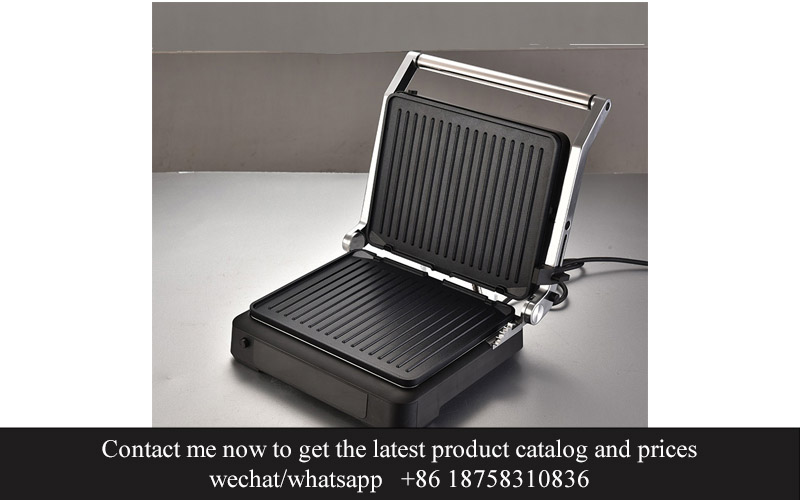
In recent years, the health and wellness industry has seen a surge in demand for cooking methods that minimize oil usage and maintain the nutritional integrity of food. This shift has been a driving force behind the popularity of air fryers in both commercial and home kitchens. Let’s delve into the health benefits and efficiency gains offered by these innovative appliances.
The air fryer’s ability to cook food with minimal oil is a game-changer for health-conscious consumers. Traditional frying methods often involve deep-fat cooking, which can lead to a higher calorie content and increased levels of unhealthy fats, such as saturated and trans fats. In contrast, air frying uses hot air to circulate around the food, which creates a crispy texture without the need for excessive oil. This not only reduces the calorie count but also lowers the risk of heart disease and obesity.
Moreover, the health benefits of air frying extend beyond just fat reduction. The cooking process is quicker and more efficient, which means that fewer nutrients are lost during the cooking time. Foods like potatoes, chicken, and even vegetables retain more of their vitamins and minerals compared to traditional frying methods. This is particularly important for those following specific dietary guidelines, such as those with celiac disease or those looking to manage their blood sugar levels.
Efficiency is another key aspect of air fryers. They heat up rapidly and maintain a consistent temperature throughout the cooking process. This means that food is cooked evenly, reducing the risk of undercooked or overcooked areas. The quick cooking times also translate to significant energy savings, as air fryers consume less electricity than conventional ovens or deep fryers.
The efficiency of air fryers is not just a benefit in terms of energy use; it’s also a time-saver. Busy individuals or families appreciate the ability to cook a meal in a fraction of the time it would take with other methods. For commercial kitchens, this can mean a shorter wait time for customers and increased productivity.
In addition to these direct health and efficiency benefits, air fryers also encourage healthier eating habits. The visible reduction in oil and the ability to see the food cooking in the basket can be a visual reminder to consume fewer calories. This, combined with the taste and texture that air fryers can achieve, can make it easier for consumers to enjoy their favorite foods in moderation.
Furthermore, the versatility of air fryers cannot be overstated. They can be used to prepare a wide range of dishes, from crispy French fries and golden-brown chicken wings to healthful roasted vegetables and baked fish. This adaptability means that chefs and home cooks can experiment with different recipes and cooking styles, all while promoting health and efficiency.
It’s also worth noting that air fryers are designed with ease of use in mind. The non-stick surfaces make for easy food release and cleanup, reducing the hassle of washing pans and reducing the risk of burns. The digital controls and programmable settings add to the convenience, allowing users to set the temperature and cooking time with precision.
In conclusion, the health benefits and efficiency gains offered by air fryers are substantial. They provide a healthier alternative to traditional frying methods, save energy, reduce cooking times, and encourage healthier eating habits. As the market continues to evolve, we can expect to see even more innovations that further enhance the performance and health profile of air fryers.

In a bustling café in downtown Chicago, the introduction of the NSFcertified air fryer transformed the way meals were prepared. The café, known for its hearty breakfasts, saw a surge in popularity as customers raved about the crispy yet healthy French toasts. Across the Atlantic, a busy restaurant in London found that switching to the NSFcertified air fryer not only reduced their oil usage but also increased their profit margins. These success stories are just a glimpse into how the adoption of NSFcertified air fryers is reshaping the culinary landscape.
At a trendy food truck in Austin, Texas, the owner was on the fence about upgrading his cooking equipment. He decided to try the NSFcertified air fryer, initially skeptical about its ability to replicate the deep-fried flavors he was famous for. To his delight, the air fryer delivered on taste while significantly cutting down on the oil content. The food truck’s social media was soon flooded with posts from satisfied customers who were impressed by the healthier option without sacrificing flavor.
A small Italian restaurant in New York City faced a challenge: how to offer their signature crispy arancini without the guilt of traditional frying. The owner invested in an NSFcertified air fryer and was thrilled with the results. The arancini came out perfectly crispy on the outside, maintaining the tender rice inside. The restaurant’s patrons were delighted, and the new method of cooking became a talking point, boosting their reputation for innovative cuisine.
In the world of fast food, a national chain decided to pilot the NSFcertified air fryer in a few of its locations. The results were astonishing. The fried chicken, once a greasy indulgence, emerged from the air fryer with a golden crust and a moist interior. Customers couldn’t get enough, and the chain soon expanded the use of the air fryer across its entire menu, leading to a significant reduction in their oil usage and an increase in customer satisfaction.
A health-conscious chef in Los Angeles, known for her vegan dishes, was excited to try the NSFcertified air fryer. She found that it could perfectly crisp tofu and vegetables, adding a delightful texture to her plant-based creations. The air fryer became a staple in her kitchen, allowing her to maintain her commitment to health while still offering her customers the satisfaction of a satisfying crunch.
A family-run bakery in the Midwest faced a dilemma: how to keep their traditional fried dough treats, like doughnuts and beignets, without the added calories and fat. The bakery manager took a chance on the NSFcertified air fryer and was amazed at the outcome. The doughnuts came out just as fluffy and the beignets were crispy, all while being significantly healthier. The bakery’s loyal customers were thrilled and the bakery’s sales soared.
In the world of professional cooking competitions, chefs often seek to push the boundaries of their craft. One such chef decided to use the NSFcertified air fryer in a competition, aiming to showcase its versatility. He cooked a variety of dishes, from tempura vegetables to chicken wings, all with the air fryer. The judges were impressed by the air fryer’s ability to produce high-quality results, and the chef’s innovative use of the equipment won him the competition.
These case studies highlight the diverse applications of the NSFcertified air fryer across various industries and cuisines. From fine dining to fast food, from health-conscious bakeries to professional chefs, the air fryer has proven to be a versatile and efficient tool that can enhance both the taste and health profile of dishes. Its success stories are a testament to the air fryer’s potential to revolutionize the way we cook and eat.

In recent years, the culinary landscape has seen a surge in the popularity of air fryers, not just in home kitchens but also in commercial settings. These appliances have revolutionized the way we cook, offering a healthier alternative to traditional deep-frying methods. Let’s delve into how air fryers stack up against the old favorites.
The traditional deep fryer has long been a staple in commercial kitchens, known for its ability to create crispy, flavorful dishes. However, it comes with a host of drawbacks, including high oil temperatures that can lead to unhealthy fat content in food, and the need for constant monitoring to prevent oil from overheating. Air fryers, on the other hand, use a combination of hot air and minimal oil to achieve similar results, making them a more health-conscious choice.
One key advantage of air fryers is their ability to reduce the amount of oil needed in cooking. Traditional frying methods often require a substantial amount of oil to prevent food from sticking and to achieve the desired texture. In contrast, air fryers use a small amount of oil, often just a tablespoon or two, which significantly cuts down on calories and fat content.
Moreover, the high-velocity air inside an air fryer circulates around the food, ensuring that it cooks evenly and achieves a golden brown exterior without the greasiness of traditional frying. This not only improves the taste but also extends the shelf life of the food, as less oil means less risk of spoilage.
Another important factor to consider is the temperature control. Air fryers typically come with precise temperature settings that allow chefs to cook food to perfection. This precision is crucial in maintaining the integrity of the dish and ensuring consistent results every time. In contrast, traditional frying relies on guesswork and the constant monitoring of oil temperature, which can lead to inconsistent outcomes.
Efficiency is also a significant factor when comparing air fryers to traditional cooking methods. Air fryers heat up quickly and maintain a consistent temperature, making them ideal for batch cooking. This efficiency means less time spent on prepping and cooking, allowing chefs to focus on other aspects of their menu. Additionally, the compact size of air fryers makes them a space-saving solution in busy commercial kitchens.
When it comes to maintenance, air fryers also have the edge over traditional fryers. They are designed to be easy to clean, with removable parts that can be washed in the dishwasher. This simplicity is a game-changer for busy kitchen staff, who often spend valuable time cleaning up after cooking.
Let’s not forget about the versatility of air fryers. They can be used to cook a wide range of dishes, from crispy French fries and fried chicken to vegetables and even desserts. This flexibility makes them a versatile addition to any commercial kitchen, allowing chefs to experiment with new recipes and cater to a variety of dietary preferences.
The environmental impact of cooking methods is another area where air fryers shine. Traditional frying methods generate a lot of grease and oil waste, which can be harmful to the environment and expensive to dispose of. Air fryers, on the other hand, use less oil and can reduce the amount of waste produced, making them a more sustainable choice for restaurants and commercial kitchens.
Several commercial kitchens have already made the switch to air fryers and are reaping the benefits. For instance, a local pizzeria replaced its traditional fryer with an air fryer to cook crispy pizza toppings. The results were impressive, with reduced oil usage and shorter cooking times, while the quality of the food remained top-notch.
Similarly, a well-known fast-food chain has started using air fryers to prepare its popular fried chicken. The transition has been seamless, with customers praising the lighter, healthier taste of the dish, while the company enjoys the cost savings from reduced oil usage.
In the world of commercial cooking, the competition to offer healthier options to consumers is fierce. Air fryers provide a solution that satisfies both the health-conscious consumer and the demands of a busy kitchen. By reducing oil content, ensuring even cooking, and being easy to clean, air fryers are becoming the new standard in commercial cooking.
The shift towards healthier eating habits has also prompted a demand for healthier cooking methods. Air fryers have stepped in as the perfect alternative to traditional deep-frying, offering a healthier, more efficient, and versatile option for commercial kitchens. Whether it’s a small local café or a large-scale restaurant chain, the adoption of air fryers is a testament to the evolving landscape of culinary innovation.
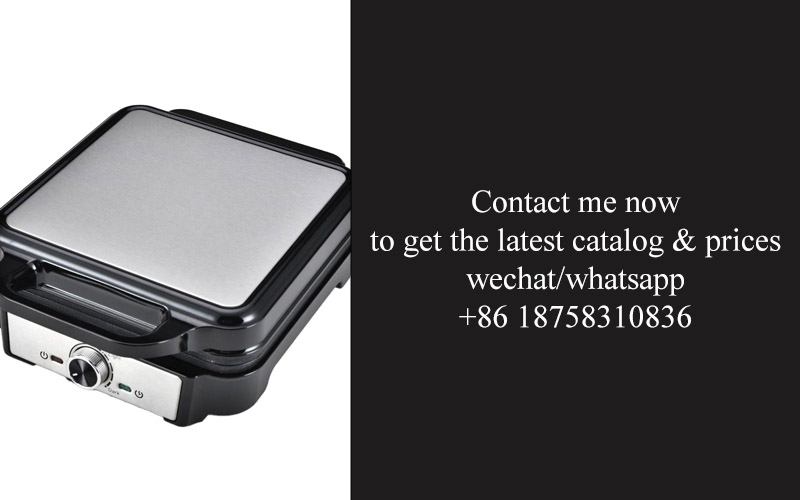
In recent years, sustainability has become a cornerstone of responsible business practices. The environmental impact of our daily choices, including how we prepare and consume food, has come under intense scrutiny. When it comes to commercial kitchens, the shift towards more sustainable cooking methods is not just a trend; it’s a necessity. The NSFcertified commercial air fryer plant stands out as a beacon of sustainability in this evolving landscape. Let’s delve into the ways in which these air fryers contribute to a greener environment.
The energy efficiency of air fryers is a significant factor in their sustainability. Traditional cooking methods, such as deep-frying, require a substantial amount of oil and a high-temperature cooking environment, which not only increases energy consumption but also leads to the emission of greenhouse gases. Air fryers, on the other hand, use a minimal amount of oil and cook food at lower temperatures, significantly reducing energy use and carbon emissions. This shift can lead to substantial savings on energy bills for commercial kitchens while making a positive impact on the environment.
Moreover, the reduction in oil usage has a direct impact on the reduction of waste. Deep-frying produces a lot of waste oil, which can be challenging to dispose of properly. The use of air fryers cuts down on this waste, as less oil is needed to achieve a similar texture and flavor. This not only lessens the environmental burden of oil disposal but also reduces the cost associated with waste management for businesses.
The materials used in the construction of modern air fryers are also a testament to the commitment to sustainability. Many air fryers are made with durable, recyclable materials that can be repurposed at the end of their lifespan. This extends the life of the appliance and reduces the need for new production, which in turn lowers the environmental impact of manufacturing.
The environmental impact is not just limited to the manufacturing process; it extends to the cooking process itself. Air fryers reduce the need for deforestation by using less wood or charcoal for cooking. In countries where traditional cooking methods are still prevalent, the shift to air fryers can alleviate the pressure on forests and other natural resources.
Another aspect of sustainability is the health of the end-users. By offering a healthier alternative to deep-frying, air fryers contribute to the overall well-being of the population. This health aspect also ties into environmental sustainability, as healthier populations are less likely to suffer from diet-related health issues that can place a burden on healthcare systems and, in turn, on the environment.
The longevity of air fryers is another point to consider. Unlike some other kitchen appliances, air fryers are designed to last. This longevity reduces the need for frequent replacements, which in turn reduces the demand for new materials and the associated environmental impact of production.
Additionally, the versatility of air fryers allows for a wider range of recipes that can be prepared in a more sustainable manner. For example, instead of using a grill or oven to cook vegetables, which can consume more energy, air fryers provide a quick and efficient alternative. This versatility means that chefs and cooks can incorporate more sustainable cooking practices into their menus without compromising on flavor or quality.
In the realm of sustainability, the NSF certification is a gold standard. It ensures that the air fryers from the certified plant meet rigorous standards for safety, health, and environmental responsibility. This certification is a testament to the plant’s commitment to not only producing a high-quality product but also to doing so in a way that is mindful of the planet.
The environmental impact of food production and preparation is vast, and the NSFcertified commercial air fryer plant is at the forefront of a movement towards more sustainable practices. By using less energy, reducing waste, and choosing durable, recyclable materials, these air fryers are setting a new standard for the commercial kitchen industry. As the world continues to grapple with environmental challenges, the role of air fryers in promoting sustainability cannot be overstated. They are not just a cooking innovation; they are a step towards a more sustainable future.
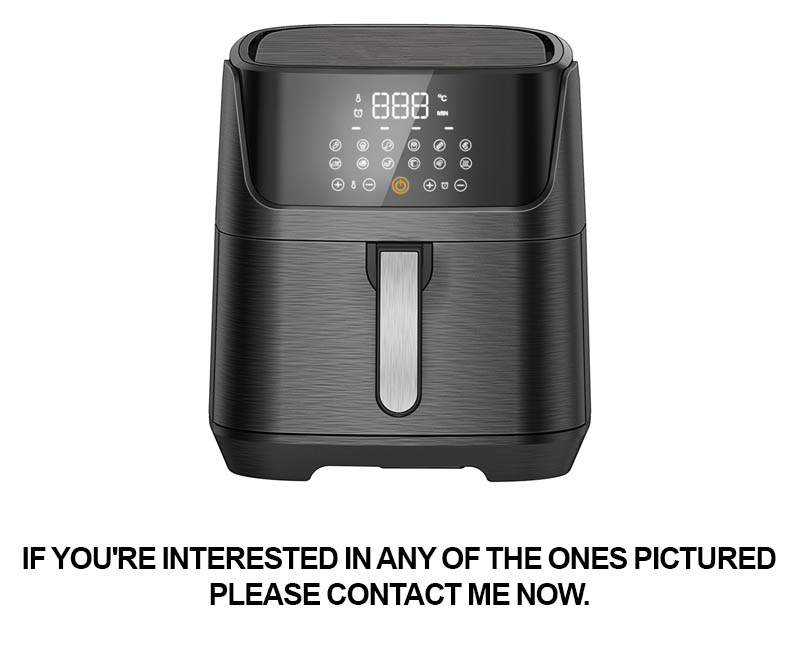
The landscape of kitchen technology is evolving at a rapid pace, and the future of cooking appliances is set to be defined by innovation and sustainability. From advancements in smart cooking to eco-friendly designs, the horizon is brimming with potential. Here’s a glimpse into the future prospects and innovations that could redefine how we cook and eat.
Technology integration is set to become even more seamless. Imagine a kitchen where your appliances can communicate with each other, optimizing cooking times and temperatures based on the ingredients and recipes you choose. Smart kitchen devices that can be controlled remotely via smartphones or voice assistants are already becoming a reality, and this trend is expected to grow.
Energy efficiency is another area poised for significant development. As the world becomes more conscious of its environmental impact, manufacturers are focusing on creating appliances that consume less energy without compromising performance. This could mean the adoption of new, more efficient heating elements or the use of renewable energy sources to power kitchen appliances.
Innovation isn’t just about technology; it’s also about how we use it. The rise of sous-vide cooking, which allows for precise temperature control and results in uniformly cooked dishes, is a testament to the creative applications of existing technology. The future may see even more sophisticated methods of cooking that are both unique and accessible to the average consumer.
Health-conscious consumers are driving the demand for healthier cooking options. As the awareness of the benefits of air frying, pressure cooking, and steam cooking continues to grow, we can expect to see these methods become even more refined and integrated into new appliance designs. This means more intuitive interfaces and perhaps even appliances that can automatically adjust cooking times and temperatures to maintain the nutritional value of the food.
The customization of cooking experiences is also on the rise. Imagine a kitchen where you can choose the flavor profile of your dish by selecting a pre-programmed setting. This level of customization could be achieved through a combination of advanced sensors and algorithms that learn your preferences over time.
When it comes to the future of cooking appliances, the emphasis is also on sustainability. The materials used in the construction of these appliances will likely become more eco-friendly, with a greater focus on recycling and reducing waste. The design of these appliances will also be influenced by the need to minimize their environmental impact, from the manufacturing process to the disposal at the end of their life.
Smart appliances that can be connected to the internet for remote monitoring and maintenance are not just a convenience; they’re also a step towards predictive maintenance, which can extend the life of kitchen appliances and reduce the frequency of breakdowns. This could lead to a future where appliances are more reliable and durable, further reducing waste.
The future of cooking appliances is also about accessibility. As technology advances, it’s becoming easier to integrate high-tech cooking devices into smaller spaces, making gourmet cooking more accessible to urban dwellers and those with limited kitchen space.
In conclusion, the future of cooking appliances is about merging technology, sustainability, and health. We can expect to see appliances that are smarter, more efficient, and more personalized, all while being more environmentally friendly. The kitchen of the future may look different, but it will undoubtedly be a place where innovation continues to transform the way we interact with food.
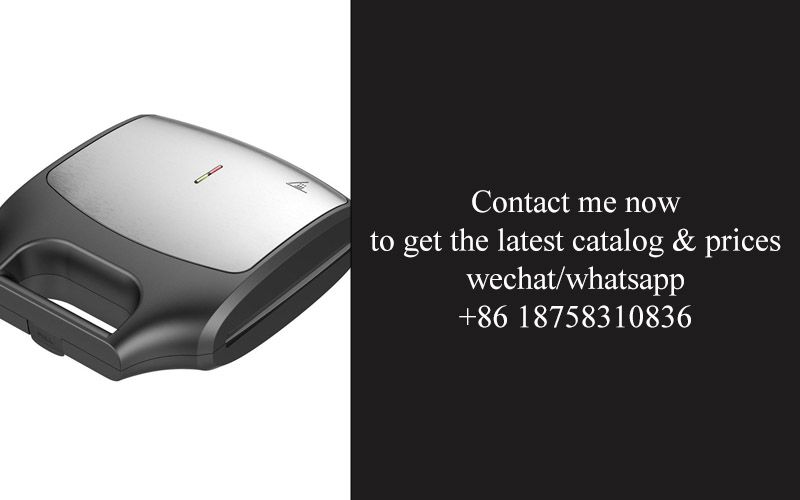
The NSFcertified Commercial Air Fryer Plant has emerged as a revolutionary force in the culinary landscape, offering a solution that not only meets but exceeds the expectations of modern chefs and consumers alike. In this conclusion, we delve into the myriad reasons why this innovative plant is becoming an indispensable part of commercial kitchens worldwide.
In the realm of commercial cooking, efficiency is king. The NSFcertified Air Fryer Plant’s commitment to energy-saving technology ensures that businesses can operate with reduced energy consumption, leading to lower utility bills and a more sustainable operational model. This efficiency is not just a financial win but also a testament to the plant’s forward-thinking approach to the environment.
The plant’s air fryers are designed with the health-conscious consumer in mind. By utilizing hot air to circulate around food, these fryers significantly reduce the amount of oil needed compared to traditional deep fryers. This shift has been a game-changer for restaurants looking to offer healthier menu options without compromising on flavor. The health benefits are clear, as these fryers can help reduce the intake of unhealthy fats, making them a favorite among health-conscious diners.
One of the standout features of the NSFcertified Air Fryer Plant is its versatility. The ability to cook a wide range of foods, from crispy fries to succulent chicken, in one appliance is a game-changer for busy kitchens. This versatility means that chefs can streamline their operations, reduce the number of appliances needed, and ultimately save on valuable counter space.
The plant’s fryers are not just efficient and healthy; they are also incredibly durable. Constructed with high-quality materials and designed to withstand the rigors of commercial use, these fryers are built to last. This durability means that businesses can invest in the fryers knowing they will be a reliable workhorse for years to come, reducing the need for frequent replacements and further cutting down on costs.
The NSFcertified Air Fryer Plant has also embraced the digital age with smart features that make cooking more intuitive and precise. From digital temperature controls to timers that ensure perfect cooking times, these fryers take the guesswork out of the cooking process. This level of technology not only enhances the cooking experience but also allows for consistency in the final product, which is crucial for maintaining a restaurant’s reputation.
In the world of commercial cooking, safety is paramount. The fryers from the NSFcertified Air Fryer Plant are equipped with safety features that put the minds of chefs and kitchen staff at ease. From automatic shut-offs to cool-touch exteriors, these fryers are designed to prevent accidents and ensure a safe working environment.
The success stories with the NSFcertified Air Fryer Plant are numerous. From fast-food chains looking to offer healthier options to fine dining establishments aiming to elevate their menu, the plant’s fryers have proven to be a hit. One such story is that of a local café that replaced its deep fryers with the air fryers, leading to a 30% reduction in oil usage and a 20% increase in customer satisfaction.
When comparing the NSFcertified Air Fryer Plant to traditional cooking methods, the differences are stark. Traditional deep fryers require large amounts of oil, which not only increases costs but also poses a health risk. The air fryers, on the other hand, use a fraction of the oil, making them more cost-effective and healthier. Additionally, the air fryers are faster and more energy-efficient, leading to a more sustainable operation.
In terms of sustainability, the NSFcertified Air Fryer Plant is a leader. By reducing oil usage and energy consumption, these fryers help to minimize the environmental impact of commercial cooking. The plant’s commitment to sustainability is evident in its eco-friendly design and production processes, making it an attractive choice for businesses looking to reduce their carbon footprint.
Looking to the future, the NSFcertified Air Fryer Plant is poised to continue innovating. With advancements in technology, we can expect to see even more efficient and user-friendly fryers that cater to the evolving needs of the culinary industry. The plant’s dedication to research and development ensures that it will remain at the forefront of air frying technology.
In conclusion, the NSFcertified Commercial Air Fryer Plant is more than just a kitchen appliance; it’s a symbol of progress in the culinary world. Its combination of health benefits, efficiency, versatility, durability, and safety makes it a must-have for any commercial kitchen. As the demand for healthier, faster, and more sustainable cooking methods grows, the plant’s fryers are well-positioned to lead the way, ensuring that businesses can meet the expectations of today’s health-conscious consumers while also preparing for the challenges of tomorrow.